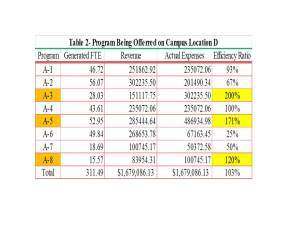As Part of our commitment to participate in the national discussion on College Education cost, the Association shares to the American Public of its most current research results as shown in the graph below. In the past three posts, AAEA has introduced the idea to apply standard costing to control the overhead cost as an integral part of the LEAN and ABC Costing approaches. Recall that all these new approaches meant to lower college education cost and make college education more affordable to the American society.
There is no standard in the education industry on the maximum amount of overhead cost that can be spent. This is one of the reasons why the spending spree is part of the current culture at some US colleges. Have you ever thought that higher institutions spent millions of dollars to build a stadium without any impact and budgeting analyses what so ever? What about spending over $500.00 for an administrative assistant chair?
This is one of AAEA motivations to conduct this research. To put a ground work that can be used as a future standard to curb the cost of education. Any percentage above this maximum number should be considered as inefficient or reckless spending indicator. Looking at the graph below, one may notice that most schools will spent around 40% on its operating cost which can be grouped in the administrative cost category. Sadly, this overhead cost may not have direct relationship with student learning outcomes, except for certain sub-category such as electricity spent at the library or at the class rooms or labs. The activity analyses and running a simple hypotheses tests will tell exactly where the overhead cost has little correlation with student learning outcomes and therefore needs to be reduced. Will it be a disaster if the big chunk of that overhead spent on the college president’s mansion and salary?
This means, there is a lot of room for improvement. By any standard, forty percent overhead will surely not a competitive figure. Think about one dollar that you contribute to a non-profit organization of your choice (example: to ease the villagers’ suffering from Ebola in country ABC) will be spent to pay the person who runs the nonprofit organization. That means only 60 percent is available to help the villagers who really need your contribution.
This is a new approach that need to be considered by the accreditation in college accreditation process or by state and federal agencies can apply in the process of rewarding the federal student loans in addition to the CAR. Hopefully, one day, it will become a reality.
Please share your opinion on College Education Cost by clicking the following link: Higher Education Cost.
Please click the following link to express your opinion ===> —-SURVEY—-


